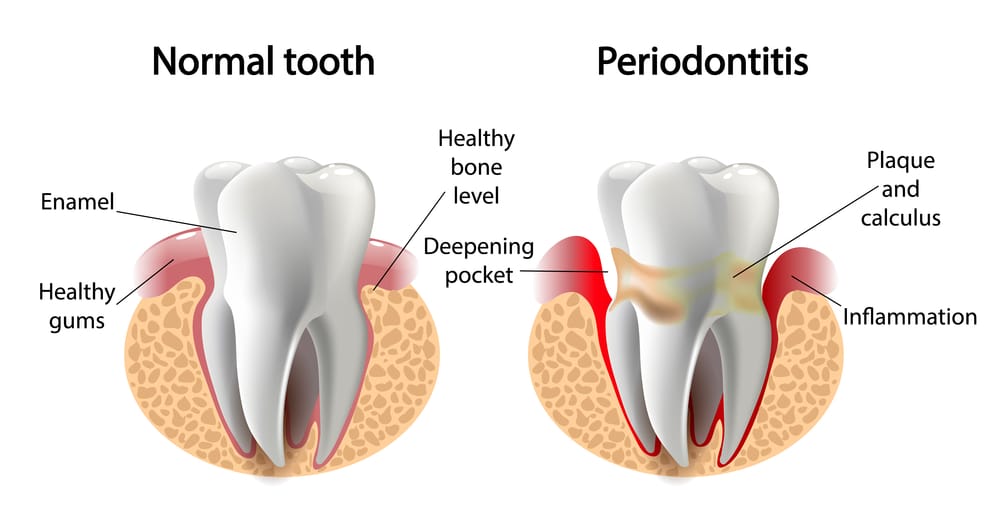
The Stages of Periodontal Disease
Understanding Gum Disease
Gum disease is not always readily apparent, because it rarely causes discomfort. However, there are several tell-tale signs that can indicate periodontal issues are present. Things like tender, red, or puffy gums signify that something isn’t quite right. At Bowmanville Dental, our doctors can help you detect periodontal disease early, so you can treat it conservatively. Today, we will discuss the three different stages of periodontal disease, and how to identify the problems and treat them. Most importantly, we will explore ways to prevent gum disease altogether for a lifetime of oral health benefits.
Stage One: Gingivitis
Are your gums swollen and inflamed? Do they bleed when you brush and floss? You are most likely experiencing the signs of gingivitis. This is the earliest phase of periodontal disease, and although it may not seem threatening, it can wreak havoc on your smile if left untreated. Gingivitis is the body’s reaction to plaque deposits on the teeth. If plaque and tartar are not removed daily through adequate brushing and flossing, the gums can become infected.
If you notice the symptoms of gingivitis, adjust your hygiene regimen right away. You may be tempted to avoid brushing and flossing if your gums are bleeding. However, becoming more aggressive with your hygiene will actually help improve the condition of the soft tissues. It is also a good idea to schedule a routine dental cleaning. At this early stage of gum disease, a cleaning is typically all you need to reverse the problem.
Stage Two: Periodontitis
Untreated gingivitis can worsen. If plaque and tartar remain on the teeth, infection-causing oral bacteria will continue to breed. When this happens, the infection not only affects the gums, but also the jawbone beneath them. This can cause pockets to form around the roots of the teeth, where further irritants can accumulate, beginning a vicious cycle.
Even the most diligent brushing and flossing cannot correct periodontitis because the pockets are simply too deep under the gum line. To treat this condition, scaling and root planing – or a deep dental cleaning – is necessary. This procedure is similar to a routine dental cleaning. However, the tissues are numbed with local anesthesia for your comfort since the clinician will need to clean deep into the gums. After the plaque deposits and debris have been removed, the roots of the teeth will be smoothed to deter further irritants from reattaching to the surfaces.
Stage Three: Advanced Periodontitis
If mild to moderate periodontitis remains untreated, the condition will advance, making the pockets around the teeth even deeper. When this occurs, the teeth may become mobile. Oftentimes, there is pus or drainage around the gum line. In some cases, this condition leads to complete tooth loss.
Scaling and root planing cannot reach deep enough into the gums to clean the infection away. Therefore, gum surgery is required to remedy this situation. During this procedure, the gums are moved back away from the teeth, the infection is cleaned out, and the gums are repositioned.
How to Prevent Gum Disease
As you might guess, detecting gum disease early is the key to conservative treatment. But how can you avoid the condition from developing in the first place? There are several factors that contribute to gum disease. In fact, some patients are simply genetically predisposed to it. The best way to prevent periodontal disease is to see your dentist regularly for examinations and cleanings. If it is determined that you are prone to this condition, we may recommend more frequent hygiene visits. Being proactive can help you save a significant amount of time and money in the future.
Find Out More About Periodontal Treatments in Bowmanville
If you think you may have gum disease, schedule a consultation right away at our Bowmanville, ON dental practice. Our team of trained dental hygienists, dentists and periodontist can treat all stages of gum disease.
